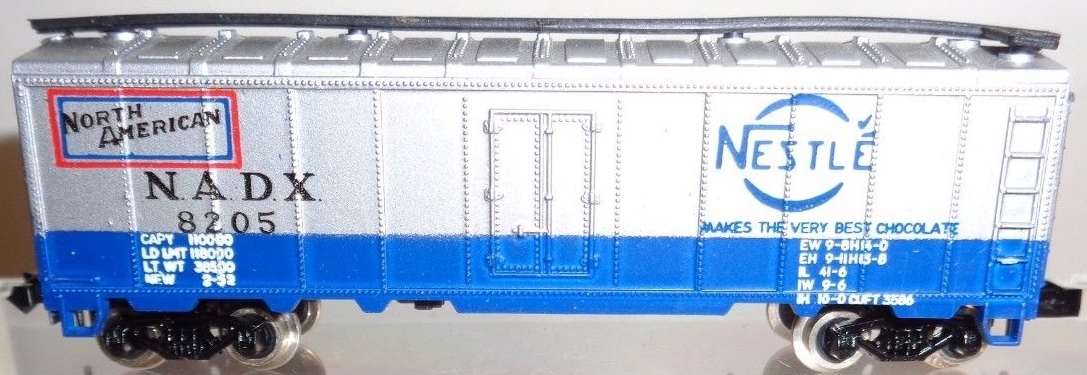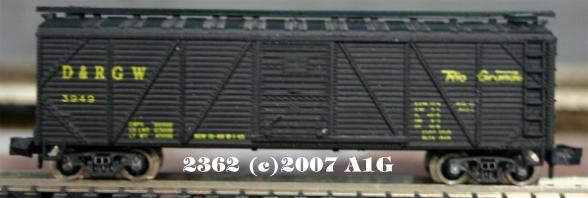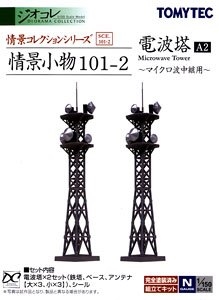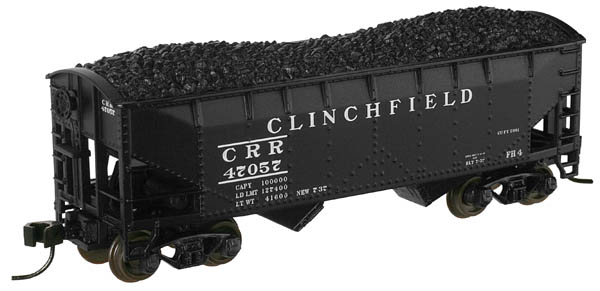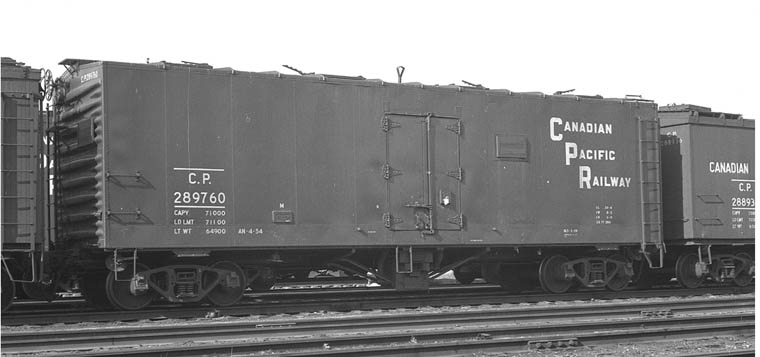Specific Item Information: Later productions can be found with plastic wheels.
Model Information: Mehano first started producing this model in the early 1970's for MRC. It is clearly a knock-off of the Roco 40 foot steel reefer of the same time period. Even the under-frames are close to identical! The only simple way to tell the difference between the Roco and Mehano versions are whether they say "Yugoslavia" or "Austria" on the underframe. I am unsure whether the tooling was licensed by Mehano or 'stolen'. The Mehano version was also imported by AHM and Model Power. Later, the tooling became lost or damaged (due to the civil war in Yugoslavia) and Mehano redid the model to carry a more conventional plug door. The new version was imported only by Life-Like.
Prototype History: Not all steel reefers contained mechanical refrigeration units. Although today we expect that a modern reefer contain an air conditioning unit to be integral to the car design, this was not always true. There was a period following the second world war when the cost of steel was cheap but the cost of a refrigeration unit was high. Early mechanical refrigeration units were unreliable, noisy, expensive and costly to maintain, and for the early post-war years many railroads continued to use ice for refrigeration even though the technology for mechanical refrigeration was possible.
In the post-WWII period, steel once again became readily available and the railroads rapidly replaced their aging fleets of wood reefers with newly constructed steel cars. Among the more common steel reefers for meat and other perishable commodities were those built by URTX. These cars had a horizontal rivet strip along the middle of each side, improved Dreadnaught ends and diagonal-panel roofs.
From Wikipedia and other sources
In the post-WWII period, steel once again became readily available and the railroads rapidly replaced their aging fleets of wood reefers with newly constructed steel cars. Among the more common steel reefers for meat and other perishable commodities were those built by URTX. These cars had a horizontal rivet strip along the middle of each side, improved Dreadnaught ends and diagonal-panel roofs.
From Wikipedia and other sources
Road Name History: 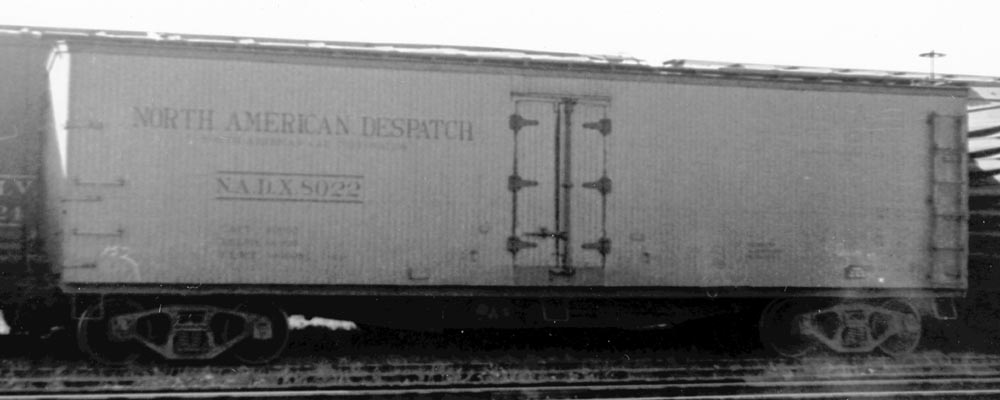 NADX was founded in the early 1900s and was headquartered in Chicago, Illinois, primarily leasing tank cars and refrigerator cars. North American Despatch was a subsidiary of the North American Car Corporation. The company leased out a flat of reefer cars using the reporting marks NADX to a variety of different railroads and food producers. The cars were typically built at the NACC's plant in Chicago Illinois. NADX and NACC were both folded into the Burlington Northern in the mid 1980s.
NADX was founded in the early 1900s and was headquartered in Chicago, Illinois, primarily leasing tank cars and refrigerator cars. North American Despatch was a subsidiary of the North American Car Corporation. The company leased out a flat of reefer cars using the reporting marks NADX to a variety of different railroads and food producers. The cars were typically built at the NACC's plant in Chicago Illinois. NADX and NACC were both folded into the Burlington Northern in the mid 1980s.

Brand/Importer Information: Founded in the late 1960's by Michael Tager, the 3rd generation business specializes in quality hobby products serving the toy and hobby markets worldwide. During its 50 years of operation, Model Power has developed a full line of model railroading products, die-cast metal aircraft, and die-cast metal cars and trucks.
In early 2014, Model Power ceased its business operations. Its extensive portfolio of intellectual property and physical assets are now exclusively produced, marketed, sold, and distributed by MRC (Model Power, MetalTrain and Mantua) and by Daron (Postage Stamp Airplanes and Airliner Collection).
In early 2014, Model Power ceased its business operations. Its extensive portfolio of intellectual property and physical assets are now exclusively produced, marketed, sold, and distributed by MRC (Model Power, MetalTrain and Mantua) and by Daron (Postage Stamp Airplanes and Airliner Collection).
Manufacturer Information: Mehano is a Slovenian toy manufacturer located in Izola, Slovenija. The company was founded as Mehanotehnika and was producing toys starting in June 1953. They first exhibited at the Nuerenberg Toy Fair in 1959. Mehano produced a number of different locomotives and rolling stock models for the North American market in the 1960s and 1970s. Companies such as Atlas and Life-Like imported a huge variety of their products. Generally they can easily be recognized as they are stamped "Yugosolavia" on the underframe. The company was formally renamed "Mehano" in 1990. Izola today is part of the country of Slovenia since the breakup of Yugoslavia.
Mehano filed for bankruptcy in 2008, but still continued to exist and operate. Since 2012, Mehano products are distributed by Lemke.
Mehano filed for bankruptcy in 2008, but still continued to exist and operate. Since 2012, Mehano products are distributed by Lemke.
Item created by: gdm on 2017-02-04 14:43:27. Last edited by gdm on 2021-02-07 16:54:04
If you see errors or missing data in this entry, please feel free to log in and edit it. Anyone with a Gmail account can log in instantly.
If you see errors or missing data in this entry, please feel free to log in and edit it. Anyone with a Gmail account can log in instantly.


